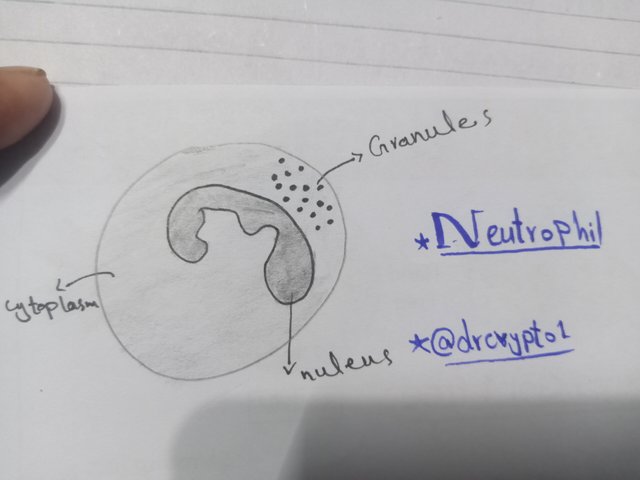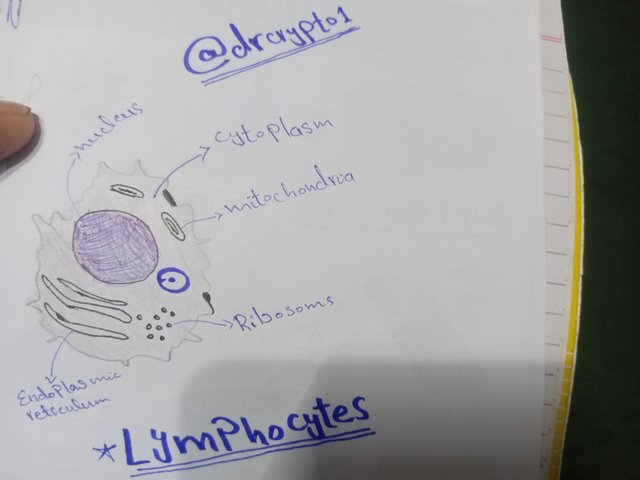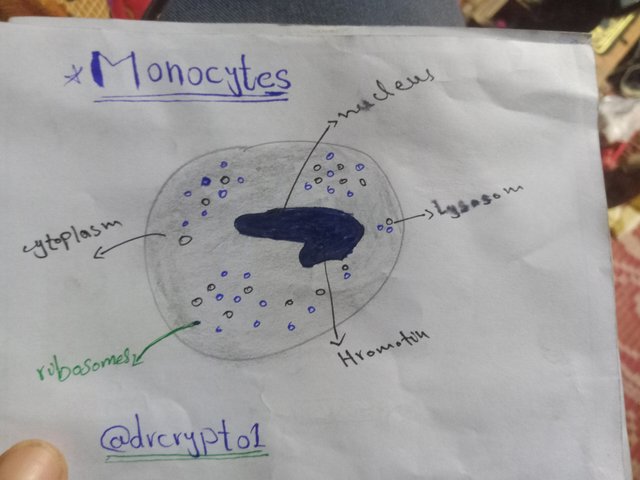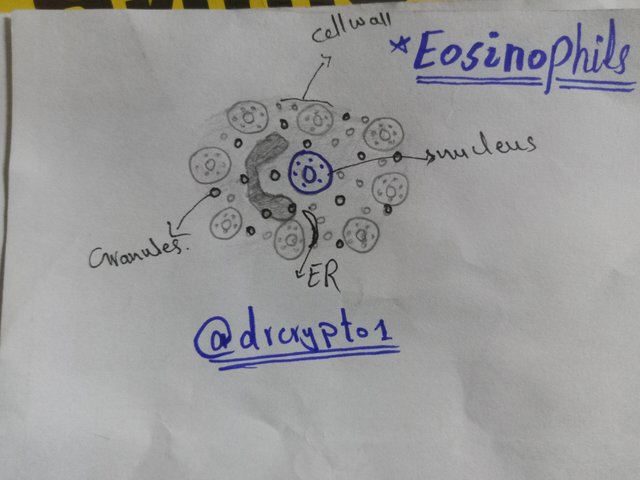Assalam-o-Alaikum! |
|---|
Hello friends! I'm @drcypto1 from #pakistan and I warmly welcome all of you to my post. I hope that you all will be fine and will be enjoying your lives. Today I'm going to participate in the contest organized by @dexsyluz and @aaliarubab in Healthy Steem The topic is "Hematology:White blood cells". Let's start the topic;

Define White Blood Cells |
|---|
White blood cells (WBCs) also known as leukocytes are very vital for our immune system. White blood cells produced in our bone marrow and circulate in blood and lymphatic system. Also they move through tissues in our body. White blood cells have distinct shapes and sizes like neutrophils, monocytes, lymphocytes (B cells and T cells). WBCs are also called little soldiers making a defense system in our body. This defense system fight against foreign harmful particals and thus protects us from diseases.
These white series are very crucial for our immune system as they destroy any harmful foreign particles and maintain our body's defense system. The normal range of white blood cells in our body is 4000 to 11000 per microliter. If there's decrease or increase in this number they can cause serious disorder like leukocytosis, leukopenia and eosinopenia. Some other functions of white blood cells are;
Functions:
As I write above that they are found in our immune system and protects from attack of foreign harmful particals. They perform many crucial functions in our body like
- Fighting against infections.
- Recognizing foreign particles.
- Destroying pathogens.
- Activating immune response.
- Removing dead cells and debris from body.
Disorders:
- Leukemia (cancer in WBCs).
- Leukocytosis (high WBCs count).
- Leukopenia (low WBCs count).
Make a diagram of the white series |
|---|
Neutrophils:
Neutrophils are part of our white blood cells which play a crucial role in our immune system. They engulf pathogens and destroy them. Also they play antimicrobial activity. They have short life span (about 5-6 days) and have multibold nucleus.

Lymphocytes:
Lymphocytes also known as immune cells play a vital role in our immune system. They are of two types, B lymphocytes and T lymphocytes. These cells have large, round nucleus and abundant cytoplasm. Lymphocytes have surface receptors which play a role of recognizing antigens in our body.

Monocytes:
Monocytes are also included in white blood series and have significant role in our immune system. They have large kidney shaped nucleus and abundant cytoplasm. Like lymphocytes, monocytes also have surface receptors for antigens recognition. They functions as phagocytosis and cytokinin production.

Eosinophils:
Eosinophils are also type of white blood cells and have crucial role in fighting against parasites and allergic reactions in our body. They have bilobed nucleus, granular cytoplasm and surface receptors for IgE complement. Eosinophils eliminate parasites from our body by destroying them. They stop allergic reactions in our body and also stop the causes of receptors in our body.

Neutrophilia vs. Neutropenia |
|---|
| Characteristics | Neutrophilia | Neutropenia |
|---|---|---|
| Neutrophils count | high no. Of neutrophils | low no. of neutrophils |
| Quantity | high neutrophils (>7000mico/dl) | low neutrophils (<1500micro/dl) |
| Cause | bacterial infection, inflammation, stress, some medication (e.g corticosteroids), cancer | Bone marrow disorders, chemotherapy, inflammation (e.g HIV), autoimmune disorders |
| Symptoms | Fever, swelling, redness, pain | Fever, fatigue, weakness, recurring infections |
| Complications | organ does function, tissue damage | septicemia, organ failure |
Explain a case related to the white blood cell series |
|---|

Let's discuss a case related to white blood cells.
Case: Suppose a 25 years old male went to doctor for checkup. Doctor examined his client found some symptoms.
Symptoms:
The symptoms were
- Fever
- Weakness
- Fatigue
- Recurring infections.
Lab results:
After lab diagnosis of those symptoms the lab results were
- White blood cells count (low)
- Lymphocytes count (low)
- Neutrophils count (low)
Diagnosis:
Leukopenia (low WBCs), neutropenia and lymphopenia likely caused by autoimmune disorder.
Treatment plan:
After diagnosis doctor gave a treatment plan to his patient which included
- Immunomodulatory medicines for controlling autoimmune disorders.
- Antibiotics for curing infections.
- Immunoglobulin replacement therapy.
- Corticosteroids for reducing inflammation.
This was a strategic plan and patient took medicines prescribed by doctor regularly and after one week the patient claimed that the symptoms of that disease were started to resolve.
I'm inviting @bonaventure24, @khursheedanwar, @patjewell and @kouba1 for participating in this contest.
Thanks for reading my post.
